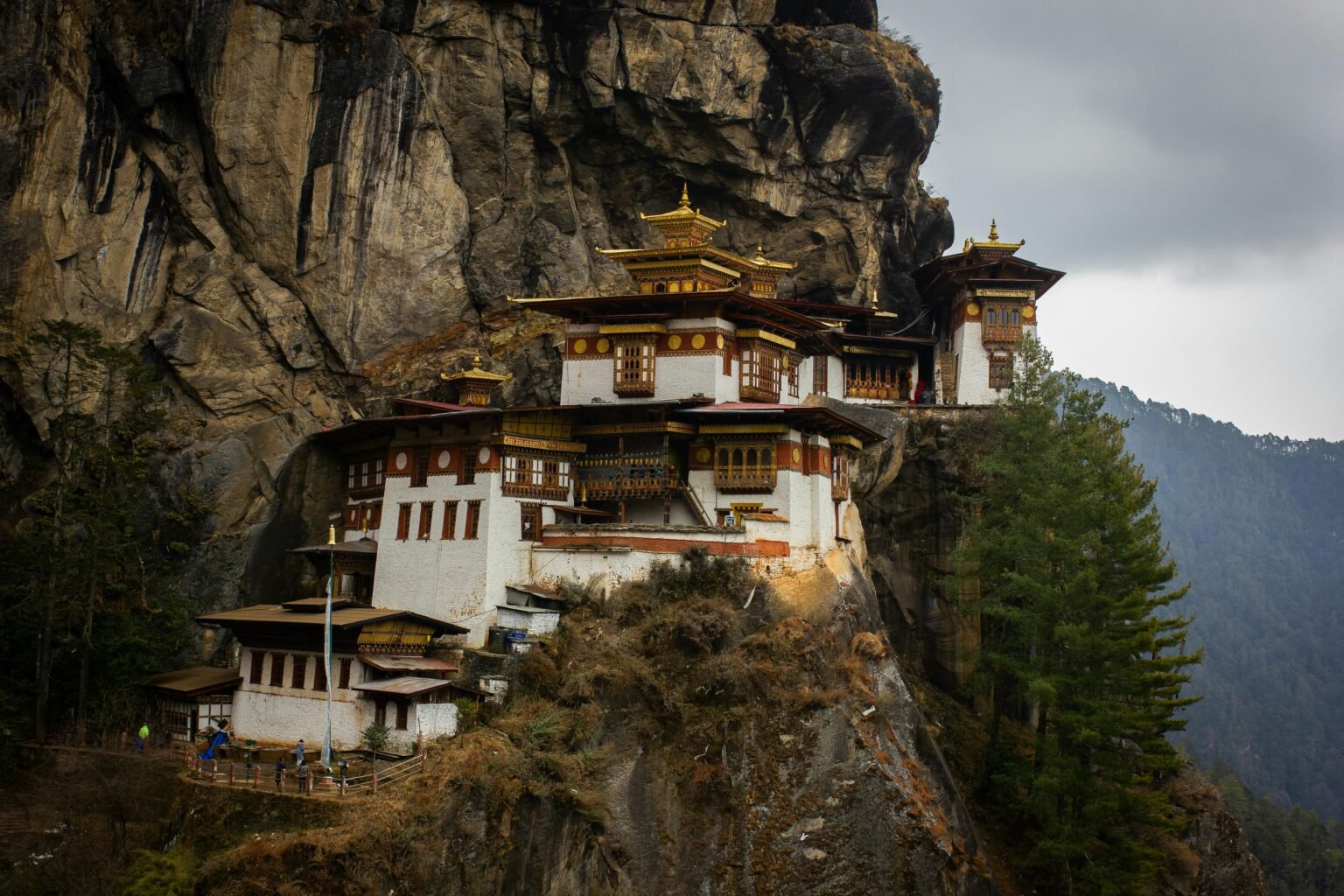Are you tired of following the same crowded tourist routes that everyone posts about on social media? Just as savvy marketers seek untapped niches for higher returns, discerning travelers can find extraordinary value in exploring Bhutan hidden gems that remain largely undiscovered. While iconic attractions like Tiger’s Nest Monastery and Punakha Dzong certainly deserve their fame, the true essence of the “Land of the Thunder Dragon” lies in its lesser-known valleys, remote villages, and authentic cultural experiences that few travelers ever witness.
Happiness is not a destination; it’s a way of life.
Bhutanese proverb
In this comprehensive guide, we’ll venture beyond the algorithm-driven destinations to uncover five remarkable hidden places in Bhutan that offer deeper connections to Bhutanese culture, pristine natural landscapes, and spiritual traditions. These destinations represent the “long-tail keywords” of travel – less competition, higher satisfaction, and more meaningful experiences for backpackers and adventure seekers who make the effort to discover them.
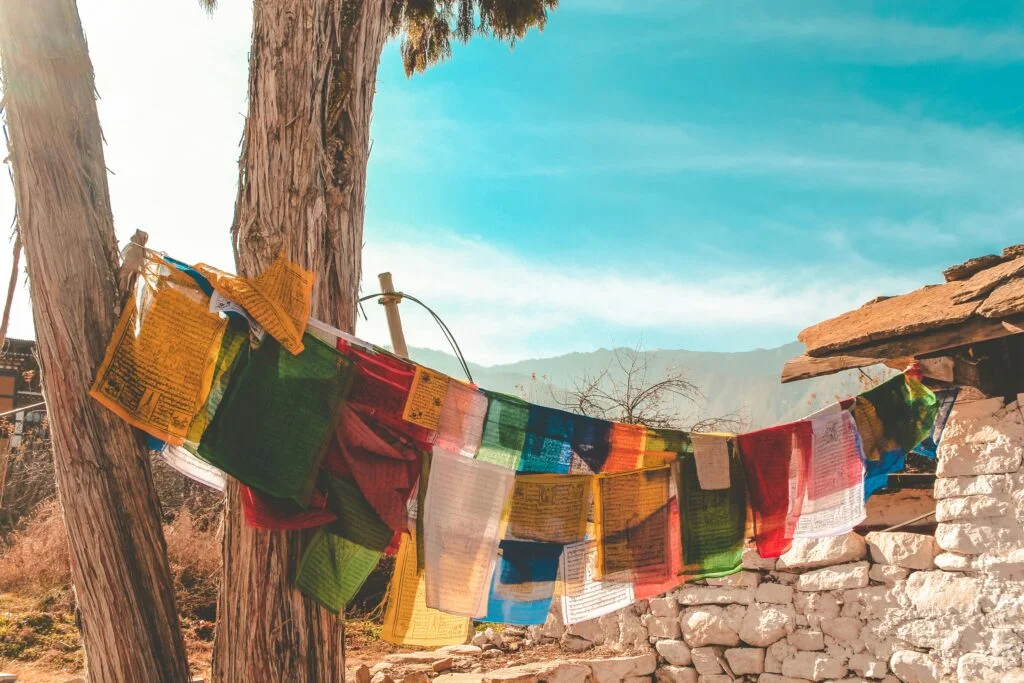
What Makes a Destination One of the Bhutan Hidden Gems?
Before diving into specific locations, it’s important to understand what truly qualifies as a hidden gem in the Bhutanese context. Unlike mainstream Bhutan tourist attractions, these special places share several key characteristics that set them apart:
- Authentic Cultural Immersion: These destinations offer genuine interactions with local communities and traditions that haven’t been modified for mass tourism.
- Pristine Natural Settings: Expect untouched landscapes with minimal development and tourist infrastructure.
- Spiritual Significance: Many hidden gems hold deep religious or cultural importance to local Bhutanese.
- Low Visitor Numbers: These places see significantly fewer tourists than popular sites, allowing for more serene and personal experiences.
- Unique Experiences: Each hidden gem offers something distinctive that can’t be found elsewhere, even within Bhutan.
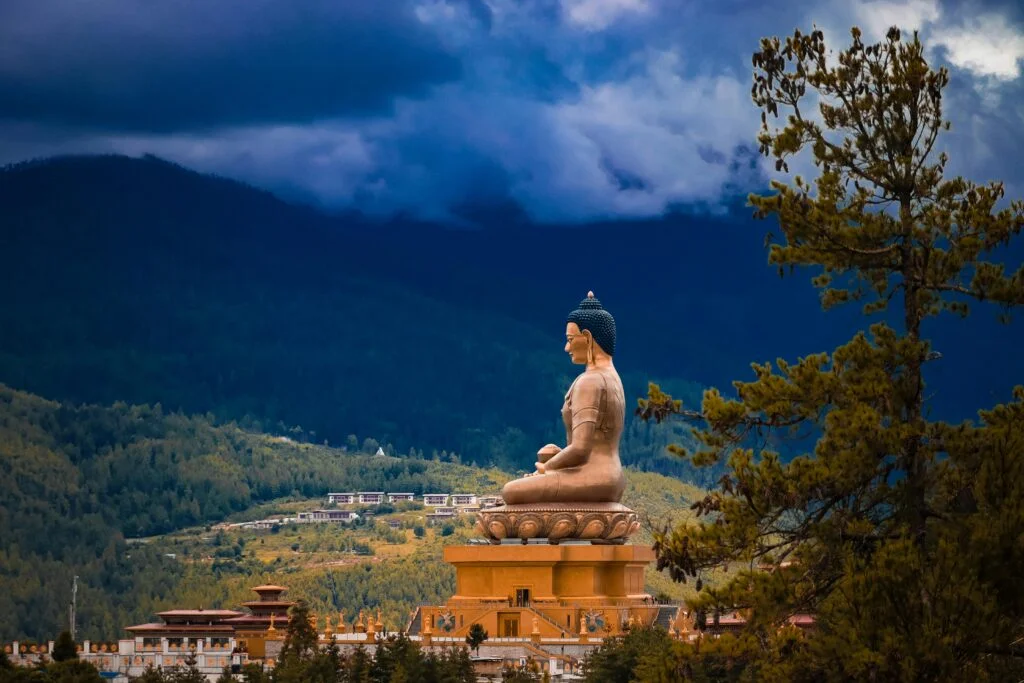
Image: Buddha Dordenma statue
In essence, these off the beaten path Bhutan destinations provide what many travelers ultimately seek – authentic connections, tranquility, and experiences that feel genuinely discovered rather than merely consumed. Now, let’s explore the five most remarkable hidden gems that Bhutan has to offer.
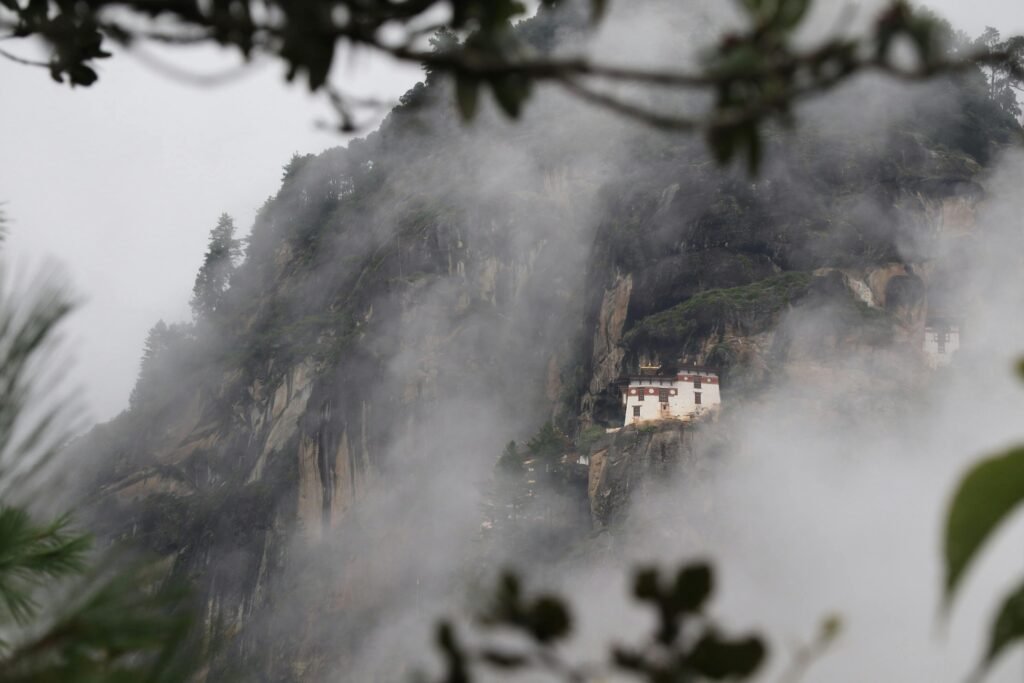
Image: Misty mountains and traditional Bhutanese farmhouses in a remote valley
5 Extraordinary Bhutan Hidden Gems Worth Discovering
1. Haa Valley: The Secluded Rice Valley of Western Bhutan
Nestled in western Bhutan just a three-hour drive from Paro International Airport, Haa Valley remains one of the most pristine places to visit in Bhutan that has somehow stayed off most tourists’ radars. This secluded valley, often referred to as the “hidden-land rice valley” in Bhutanese, offers a perfect combination of accessibility and authenticity that makes it ideal for backpackers seeking genuine experiences.
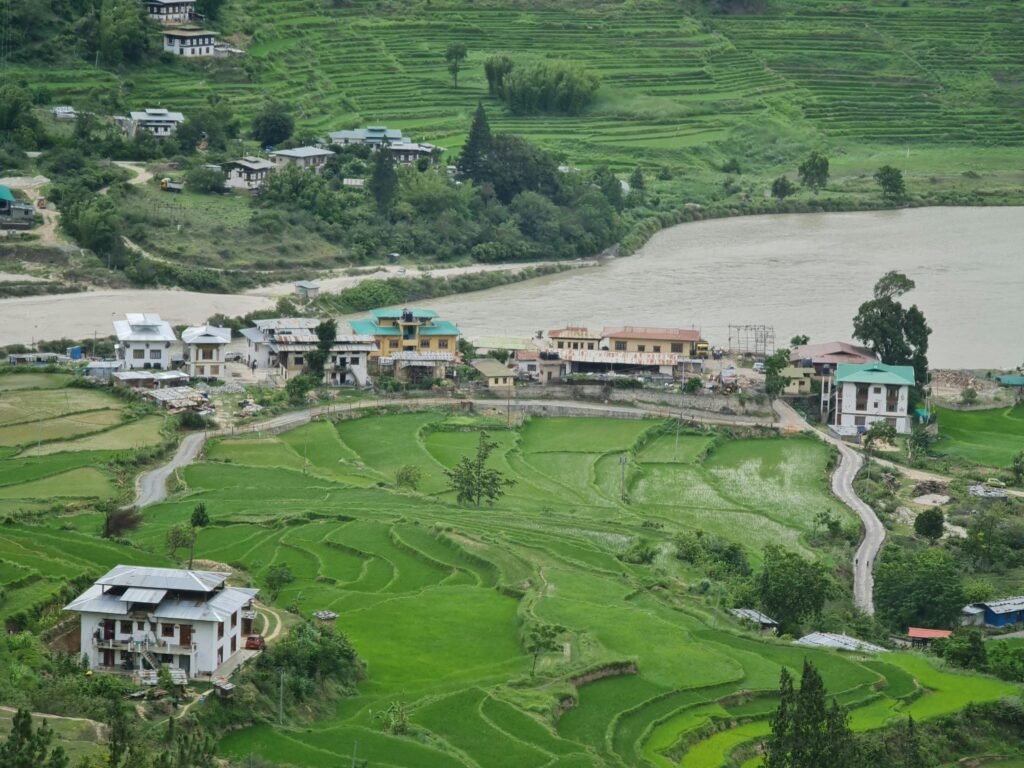
Image: Punakha Valley
What makes Haa Valley special is its remarkable preservation of traditional Bhutanese village life. Unlike more developed tourist areas, Haa features no large hotels – instead, visitors stay in homestays with local families, providing an unfiltered glimpse into authentic rural Bhutanese culture. The valley is characterized by lush forests, rolling alpine meadows, and picturesque rice fields framed by towering mountains.
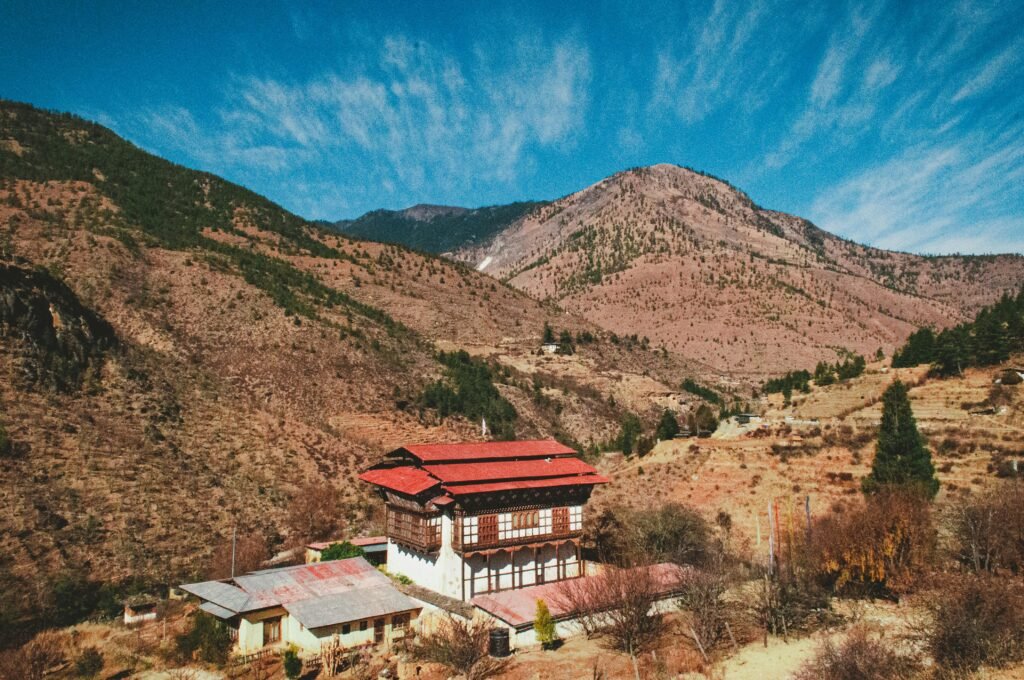
Image: Haa Valley
Cultural highlights of Haa Valley include:
- Lhakhang Karpo (White Temple): This historically significant temple was reportedly built in the 7th century by the Tibetan king Songtsen Gampo.
- Lhakhang Nagpo (Black Temple): Standing in contrast to its white counterpart, this temple is dedicated to the protective deity of Haa.
- Traditional Architecture: The valley is dotted with traditional Bhutanese farmhouses featuring distinctive architectural elements rarely seen in more modernized areas.
For active travelers, Haa offers excellent hiking opportunities through pristine forests and meadows. One particularly special experience is learning about traditional textile dyeing and weaving practices that local artisans perform in the forests using natural materials. Additionally, if your timing aligns, the annual Haa Summer Festival showcases nomadic traditions, local sports, and cultural performances that few tourists ever witness.
For a truly unique experience, arrange for a personalized astrology reading by a Buddhist monk beside a bonfire – a spiritual practice that connects deeply to Bhutanese cultural traditions and offers insights you won’t find in typical tourist experiences.

Image: Traditional Bhutanese white temple with prayer flags in Haa Valley
2. Merak and Sakteng: Journey to the Land of the Brokpa Nomads
For adventurous backpackers seeking truly off the beaten path Bhutan experiences, the remote regions of Merak and Sakteng in eastern Bhutan offer an extraordinary glimpse into one of the country’s most distinctive cultures. Home to the semi-nomadic Brokpa people, these isolated communities maintain traditions and lifestyles that have remained largely unchanged for centuries.
Reaching these remote areas requires commitment – typically involving a flight to Yongphula in Trashigang followed by a 4-5 hour drive to Merak. This journey itself becomes part of the adventure, taking you through increasingly remote landscapes far from typical tourist routes.
The Brokpa people are immediately recognizable by their unique traditional dress, which includes distinctive hats made from yak hair and sheep wool. Their semi-nomadic lifestyle revolves around seasonal migrations with yaks and sheep, representing one of the most sustainable living practices that has withstood the test of time.
Unique experiences in Merak and Sakteng include:
- Merak-Sakteng Trek: This challenging but rewarding 7-8 hour hike between the two villages takes you through stunning mountain landscapes and offers opportunities to interact with Brokpa communities along the way.
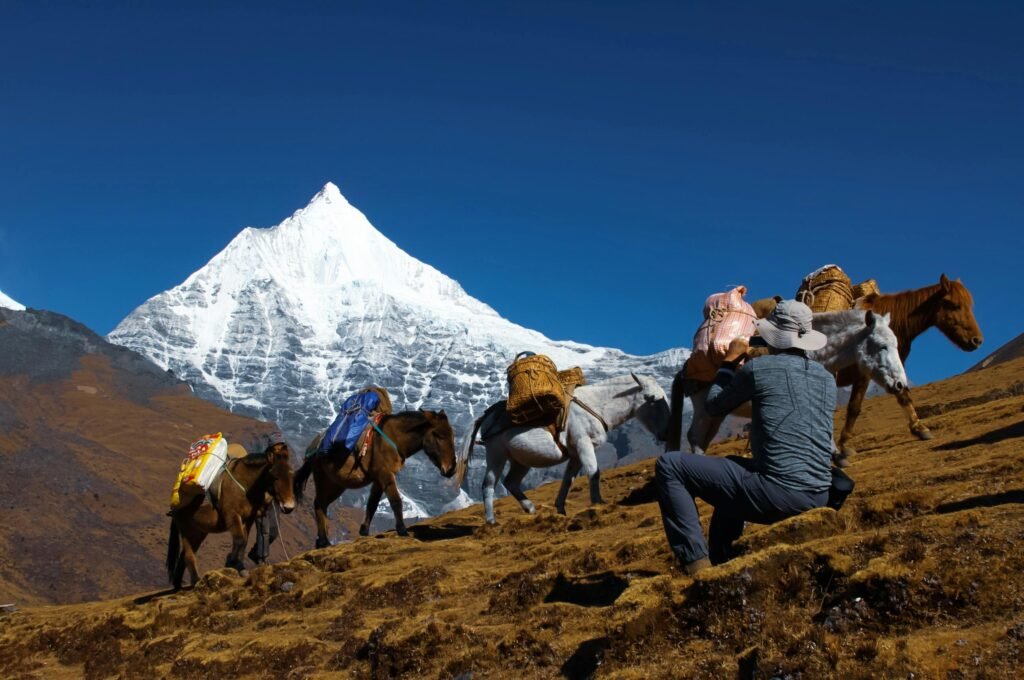
- Sakteng Wildlife Sanctuary: This unique protected area was established partly to preserve the habitat of the mythical Yeti (locally known as Migoi). While you might not spot the legendary creature, the sanctuary is home to numerous rare species, including the endangered red panda.
- Cultural Immersion: In Merak Village, locals often welcome visitors with bonfires, traditional Yak dances, and fascinating stories about Yeti sightings passed down through generations.
- Annual Brokpa Festivals: If your timing allows, witnessing a traditional Brokpa festival offers rare insights into their unique cultural practices, religious ceremonies, and community celebrations.
It’s important to note that visiting Merak and Sakteng requires planning through a registered Bhutanese tour operator due to their remoteness and special permit requirements. However, for those seeking anthropological insights and true adventure, these regions offer experiences that few other destinations in the world can match.

3. Phobjikha Valley: Sanctuary of Black-Necked Cranes and Pristine Nature
While slightly more known than our previous entries, Phobjikha Valley (also called Gangtey Valley) remains one of the most magical places to visit in Bhutan that still feels like a genuine discovery. Located in central Bhutan, this glacial valley is renowned for its breathtaking landscapes, spiritual significance, and role as a crucial wildlife sanctuary.
What truly sets Phobjikha apart is its status as the winter home of the endangered black-necked cranes. These majestic birds migrate from the Tibetan Plateau to Phobjikha each year between late October and mid-February, an event celebrated by locals through the annual Crane Festival in November. For wildlife enthusiasts and photographers, witnessing these rare birds against the backdrop of the valley’s pristine landscape is an unforgettable experience.
Dominating the valley’s skyline is the impressive 17th-century Gangtey Monastery, an important center of the Nyingmapa school of Buddhism. Perched on a ridge overlooking the entire valley, this monastery offers both spiritual significance and spectacular views that capture the essence of Bhutan’s natural beauty.
Key experiences in Phobjikha Valley include:
- Nature Trails: Several well-maintained hiking paths wind through the valley, offering opportunities to spot wildlife and immerse yourself in the serene landscape. The Gangtey Nature Trail is particularly popular for its accessibility and beautiful views.
- Birdwatching: Beyond the famous black-necked cranes, the valley hosts numerous other bird species, making it a paradise for birdwatchers.
- Sustainable Tourism: Phobjikha has embraced eco-friendly tourism practices, with solar heating and other conservation initiatives that align with Bhutan’s environmental philosophy.
- Rural Farm Stays: Several farms in the valley offer authentic homestay experiences where visitors can participate in daily agricultural activities and experience traditional Bhutanese rural life.

Image: Panoramic view of lush green mountains and valley near Thimphu
What makes Phobjikha particularly appealing for backpackers is its accessibility compared to more remote regions like Merak and Sakteng, while still offering genuine natural and cultural experiences away from large tourist groups. The valley’s commitment to conservation also makes it an excellent choice for environmentally conscious travelers seeking authentic Bhutan experiences.
4. Lhuentse: The Weaving Heartland and Royal Ancestral Home
In northeastern Bhutan lies Lhuentse, one of the country’s most scenic and culturally rich districts that remains largely unexplored by international visitors. This remote region offers a perfect combination of textile heritage, royal history, and spectacular mountain landscapes that make it one of the most rewarding Bhutan hidden gems for culturally curious travelers.
Lhuentse is renowned throughout Bhutan as the country’s weaving heartland, particularly famous for its intricate handwoven textiles. The village of Khoma is especially noted for producing the highly prized Kishuthara fabrics – complex silk textiles featuring geometric patterns that can take months to complete. For visitors interested in traditional crafts, witnessing master weavers at work provides insights into artistic traditions that have been passed down through generations.
Beyond its textile significance, Lhuentse holds special importance as the ancestral home of Bhutan’s royal family. The Kurtoe region of Lhuentse is where the Wangchuck dynasty originated, adding a layer of historical significance to this already fascinating area.
Highlights of Lhuentse include:
- Lhuentse Dzong: This impressive fortress-monastery sits dramatically atop a hill overlooking the Kuri Chhu river. Built in the 17th century, it serves as both the administrative and religious center of the district.
- Khoma Village: The center of Bhutan’s most sophisticated weaving traditions, where visitors can observe artisans creating intricate textiles and even try their hand at simple weaving techniques.
- Sacred Sites: The region contains numerous temples and sacred locations, including the significant Singye Dzong, accessible via a rewarding trek through beautiful landscapes.
- Traditional Villages: Several villages in the area maintain traditional lifestyles and architectural styles that have changed little over centuries, offering authentic cultural immersion.
While reaching Lhuentse requires additional travel time from more frequented destinations, the reward is experiencing a region of Bhutan that maintains its authentic character and offers insights into the country’s textile arts, royal heritage, and rural traditions that few visitors ever witness.
5. Trashiyangtse: Eastern Bhutan’s Authentic Cultural Enclave
Completing our journey through Bhutan hidden gems, we arrive at Trashiyangtse, a district in eastern Bhutan that embodies authentic Bhutanese culture away from established tourist circuits. This region offers a genuine glimpse into daily Bhutanese life, spiritual practices, and natural beauty that remains largely untouched by outside influences.
Trashiyangtse is home to several significant religious sites that hold deep importance for Bhutanese Buddhists. Chorten Kora, a stupa built in the 18th century in the style of Nepal’s Boudhanath, is one of the most important religious monuments in eastern Bhutan. During annual festivals, pilgrims from neighboring regions and even across the border from India gather to circumambulate this sacred structure.
Another spiritual highlight is Gomphu Kora, a sacred meditation site associated with Guru Rinpoche that attracts devotees during its spring festival. These religious sites offer visitors opportunities to witness genuine spiritual practices rather than performances staged for tourists.
Unique aspects of Trashiyangtse include:
- Traditional Crafts: The region is famous for wooden bowls and containers known as Dapa, handmade paper, and intricate woodcarvings. The Institute for Zorig Chusum (Traditional Arts) trains students in these ancient crafts.
- Bumdeling Wildlife Sanctuary: This protected area provides habitat for numerous rare species and serves as another winter home for black-necked cranes, typically with fewer visitors than Phobjikha Valley.
- Pristine Landscapes: The surrounding countryside features beautiful rivers, forests, and mountain vistas that offer excellent hiking opportunities and photography.
- Cultural Authenticity: With fewer tourists than western Bhutan, interactions with locals tend to be more genuine and less commercial, providing deeper cultural insights.
For travelers seeking to experience eastern Bhutanese culture, Trashiyangtse offers a perfect combination of spiritual significance, traditional crafts, and natural beauty in a setting that feels genuinely discovered rather than merely visited.

Image: Chorten Kora stupa with prayer flags and local pilgrims circumambulating
🗺️ Love off-the-grid gems? Don’t miss this Mongolia travel guide — vast steppes, nomadic culture, and a whole lot of sky.
Planning Your Journey to Bhutan’s Hidden Gems
Best Time to Visit Bhutan’s Lesser-Known Regions
Timing your visit appropriately is crucial for fully experiencing these Bhutan hidden gems. While the country’s general tourist seasons apply broadly, each region has optimal visiting periods:
Spring (March to May): Perhaps the best overall season for exploring hidden gems, with comfortable temperatures, clear mountain views, and spectacular rhododendron blooms in higher elevations. This is ideal for visiting Haa Valley and Phobjikha Valley.
Autumn (September to November): Another excellent period with clear skies and comfortable temperatures perfect for trekking and outdoor activities. This is the optimal time for Lhuentse and Trashiyangtse.
Winter (December to February): While colder, this is the only time to see black-necked cranes in Phobjikha Valley. Some higher regions like Merak and Sakteng may have limited accessibility due to snow.
Summer (June to August): The monsoon season brings lush landscapes but also rain and occasionally muddy conditions. Some remote areas may have limited accessibility due to road conditions.
For wildlife enthusiasts specifically interested in the black-necked cranes, planning your visit between November and February is essential. For those interested in festivals, research specific dates for local celebrations like the Haa Summer Festival or the Crane Festival in Phobjikha, as these offer unique cultural insights.
Practical Tips for Exploring Off-the-Beaten-Path Bhutan
Venturing beyond mainstream Bhutan tourist attractions requires additional preparation. Here are essential tips for backpackers planning to explore these hidden gems:
Tour Arrangements: All tourists to Bhutan must book through a licensed Bhutanese tour operator. When planning your itinerary, specifically request these lesser-known destinations, as many standard tour packages focus only on popular sites.
Permits: Some regions, particularly Merak and Sakteng, require special permits beyond the standard tourist visa. Ensure your tour operator arranges these well in advance.
Connectivity: Prepare for limited or no internet connectivity in remote areas. Download offline maps, translation tools, and any essential information before departing major towns. Consider a reliable travel eSIM that works in Bhutan’s remote areas for emergency communication.
Accommodation Expectations: In hidden gems like Haa Valley or Merak, accommodations are typically basic homestays or simple guesthouses rather than luxury hotels. Embrace this as part of the authentic experience.
Physical Preparation: Many hidden gems involve moderate to challenging hikes or long journeys on rough roads. Maintain reasonable physical fitness and bring appropriate gear, especially good hiking boots.
Cultural Sensitivity: These less-visited areas maintain stronger traditional practices. Learn basic cultural etiquette, dress modestly, and always ask permission before photographing people or religious sites.
Language: While English is widely spoken in tourist areas, in remote regions, knowing a few basic Dzongkha phrases can greatly enhance your experience and show respect for local culture.
Connectivity Solutions for Remote Bhutan Travel
Staying connected while exploring remote places to visit in Bhutan presents unique challenges. Here are practical connectivity solutions for backpackers:
Local SIM Cards: Available in major towns like Thimphu and Paro, but coverage becomes increasingly limited in remote areas.
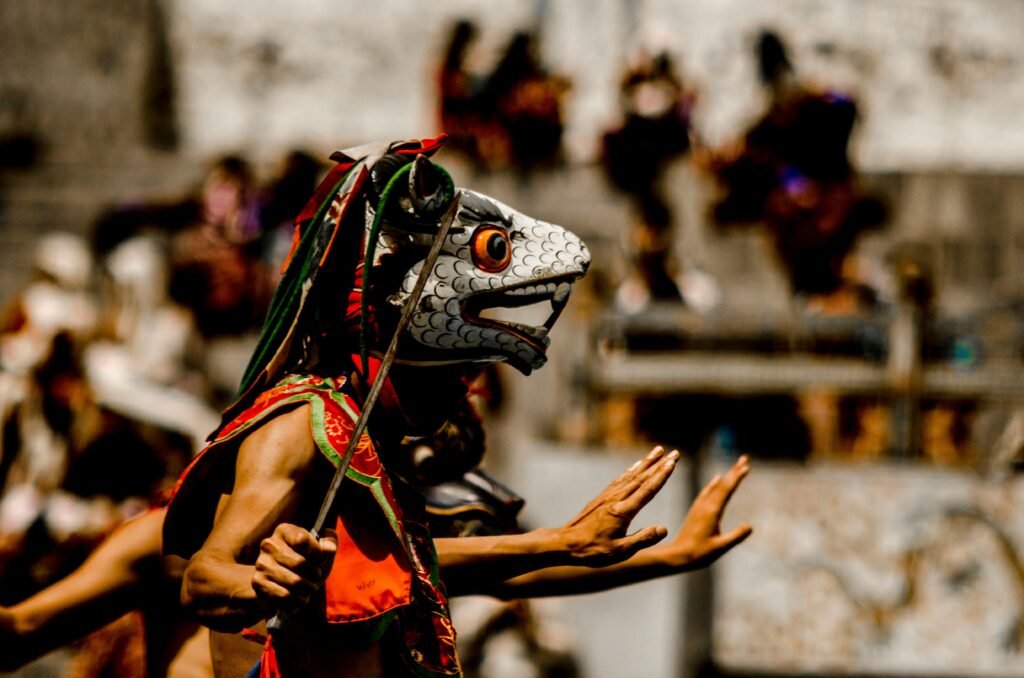
Image: Thimphu, Bhutan
eSIM Technology: Consider an international eSIM solution that provides coverage across Bhutan, including in some remote areas. This eliminates the need to purchase physical SIM cards and can be activated before your arrival.
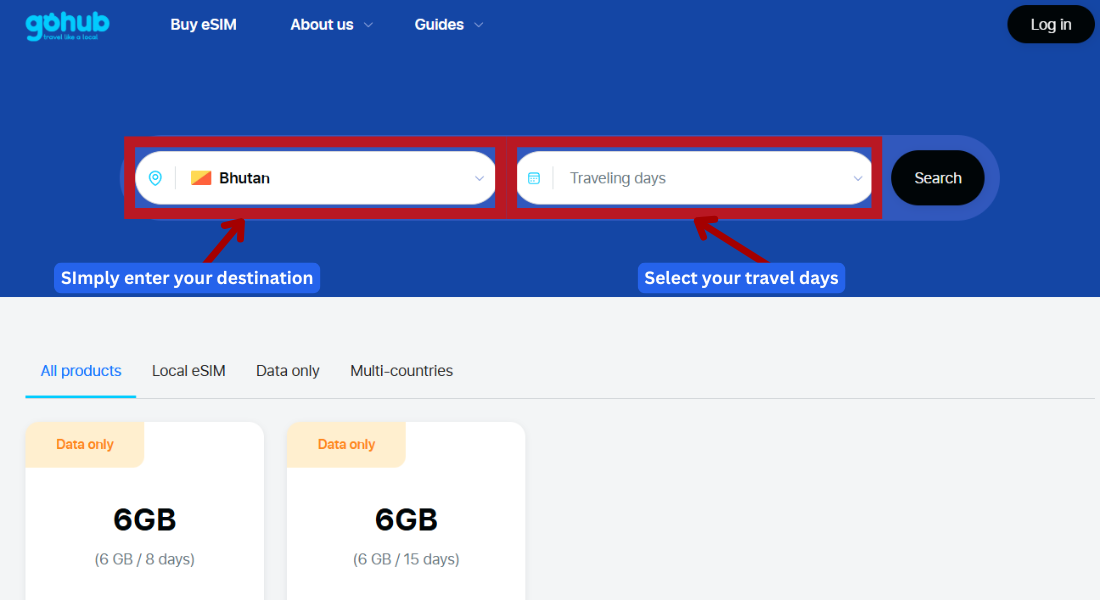
Image: Screenshot of the GoHub eSIM webpage, highlighting the destination input field with “Bhutan” selected, illustrating how users can easily search for eSIM data plans.
Offline Preparations: Download essential apps and content before heading to remote areas:
- Offline maps (Maps.me or Google Maps offline)
- Translation tools with Dzongkha language support
- Relevant travel guides and information
- Entertainment for long journeys
Communication Expectations: Set proper expectations with family and contacts at home about your limited connectivity during portions of your trip to avoid unnecessary worry.
For emergency situations in very remote areas like Merak and Sakteng, your guide will typically have access to local communication networks or know the nearest location with connectivity.
The Strategic Advantage of Discovering Bhutan’s Hidden Treasures
Venturing beyond the established tourist circuit to explore these Bhutan hidden gems offers rewards that transcend typical travel experiences. By seeking out these lesser-known destinations, you’re not just checking items off a list – you’re engaging with Bhutan on a deeper level that reveals the country’s true essence.
These hidden gems provide:
- Authentic Cultural Immersion: Genuine interactions with communities that maintain traditional ways of life
- Pristine Natural Environments: Landscapes largely untouched by tourism development
- Spiritual Connections: Opportunities to experience Buddhist practices in their authentic contexts
- Unique Photography: Visual stories that haven’t been captured countless times on social media
- Meaningful Memories: Experiences that feel personally discovered rather than mass-produced
For the backpacker seeking substance over spectacle and connection over consumption, Bhutan’s hidden gems offer the perfect alternative to algorithm-driven tourism. Just as the most valuable insights often come from unexpected sources, the most meaningful travel experiences often lie beyond the well-trodden path.
Before you leave, remember to secure reliable connectivity for your journey with Gohub’s Bhutan eSIM solutions, ensuring you can share your discoveries and stay connected even in Bhutan’s most remote regions. For more inspiration, check out our guides to trekking in Bhutan and Bhutan’s festival calendar.
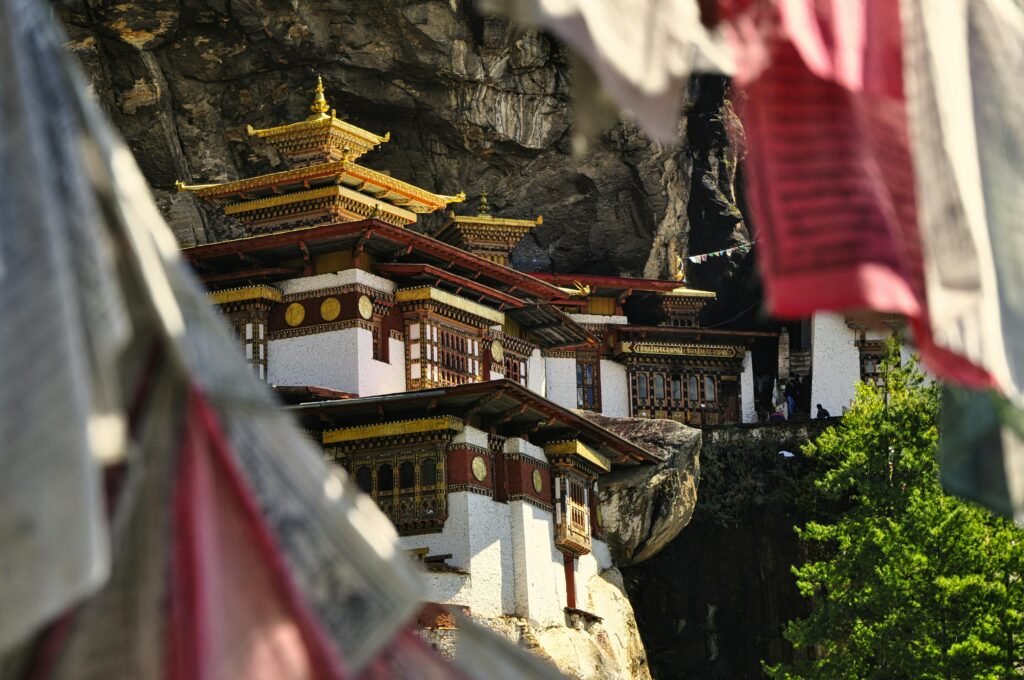
Image: Prayer flags at sunset with view of remote Bhutanese monastery on mountainside
📶 From Paro to Punakha, stay connected with Gohub’s Asia eSIM — ideal for remote regions like Bhutan. No roaming, just signal wherever your soul wanders.


